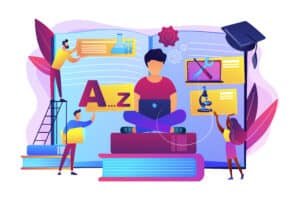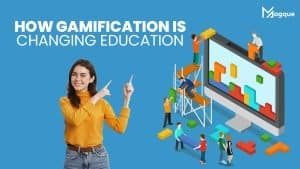Hey there, fellow knowledge-seeker! Have you ever wondered how playing games could make you smarter? Well, buckle up because we’re about to dive into the fascinating world of gamification in education.
Picture this: you’re sitting in a classroom, staring at a whiteboard filled with equations or historical dates. It’s all dull, right? But what if learning could be as engaging as your favourite video game? That’s where gamification comes in.
What Exactly is Gamification in Education?
Gamification is like sprinkling a little bit of magic dust on traditional learning methods. It involves incorporating game elements into educational activities, like points, badges, and leaderboards. Sounds fun.
Imagine solving math problems to unlock the next level or competing with your classmates to see who can master a new language first. Suddenly, learning becomes an adventure rather than a chore.
Why Gamify Education?
Gone are the days of one-size-fits-all teaching methods. With gamification, educators can cater to different learning styles and keep students actively engaged. After all, who doesn’t love friendly competition or the satisfaction of levelling up?
But it’s not just about making learning more enjoyable. Gamification also promotes critical thinking, problem-solving skills, and collaboration—all essential for success in the 21st century.
The Impact of Gamification on Learning
Studies have shown that gamification can lead to higher levels of motivation and participation among students. Tapping into our natural desire for achievement and reward creates a positive feedback loop that keeps us coming back for more.
But perhaps the most exciting part is how gamification can make complex topics more accessible. Whether it’s mastering difficult concepts in science or understanding historical events, games can break things down into bite-sized chunks that are easier to digest.
Examples of Gamification in Education
So, how exactly are educators using gamification to revolutionize the classroom? Here are a few examples to get those creative juices flowing:
- Kahoot!: This popular quiz-based platform turns learning into a game show, where students compete to answer questions correctly in real time.
- Duolingo: Have you ever dreamed of becoming fluent in a new language? Duolingo turns language learning into a fun and addictive game with levels and achievements.
- Classcraft: By transforming the classroom into a fantasy world, Classcraft encourages teamwork and positive behaviour through role-playing and quests.
In Conclusion
Gamification isn’t just a passing trend—it’s a powerful tool here to stay. By harnessing the innate human desire for play and competition, educators can create dynamic learning experiences that inspire and motivate students.
So, the next time you struggle to stay focused in class, just remember that learning doesn’t have to be boring. With gamification, the possibilities are endless. Are you ready to level up your education? And be sure to explore Magque, your go-to source for the latest and most intriguing updates in the realms of informative tips & reviews!
FAQs
Q1. What exactly is gamification in education?
Gamification in education involves integrating game elements, such as points, badges, and leaderboards, into learning activities to make them more engaging and interactive. It aims to transform traditional teaching methods into dynamic and enjoyable student experiences.
Q2. How does gamification benefit education?
Gamification benefits education in several ways. It enhances student motivation and participation, promotes critical thinking and problem-solving skills, and caters to different learning styles. Additionally, gamified learning experiences can make complex topics more accessible and enjoyable for students.
Q3. Are there any risks or drawbacks associated with gamification in education?
While gamification can be highly effective, it’s essential to consider potential risks. More than relying on gamified elements may distract from the core educational content, and poorly designed games could lead to disengagement or frustration among students. Ensuring inclusivity and accessibility for all learners is crucial when implementing gamified learning experiences.
Q4. How can educators incorporate gamification into their teaching practices?
Educators can incorporate gamification into their teaching practices by integrating game elements, such as rewards, challenges, and feedback mechanisms, into lesson plans and activities. They can also utilize gamified learning platforms and tools to create interactive and immersive student educational experiences.
Q5. What are some successful examples of gamification in education?
Several successful examples of gamification in education exist, ranging from digital platforms like Kahoot! and Duolingo to classroom-based approaches like Classcraft. These examples demonstrate how gamification can effectively enhance student engagement, motivation, and learning outcomes across various subjects and grade levels.
Read Also This:- Interactive Learning Apps Engaging Students Globally













